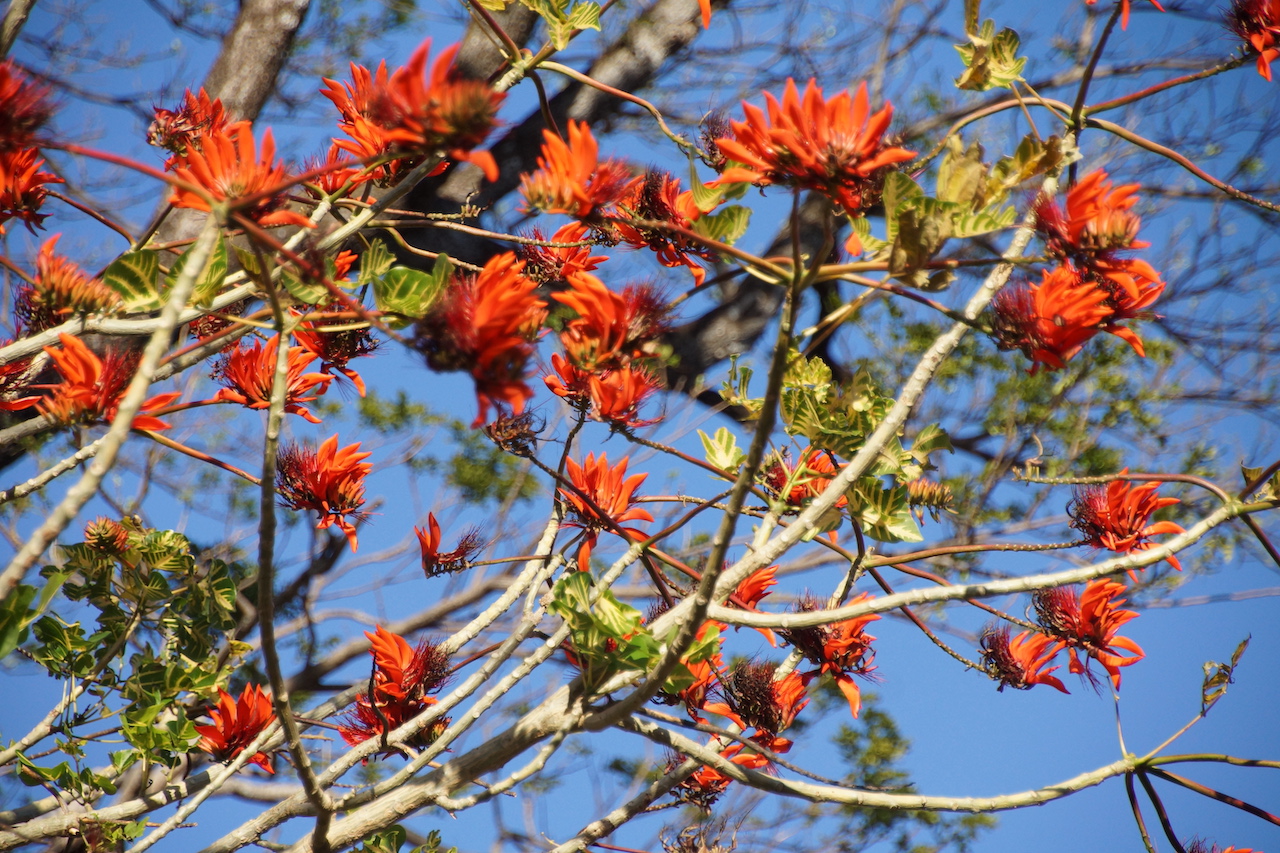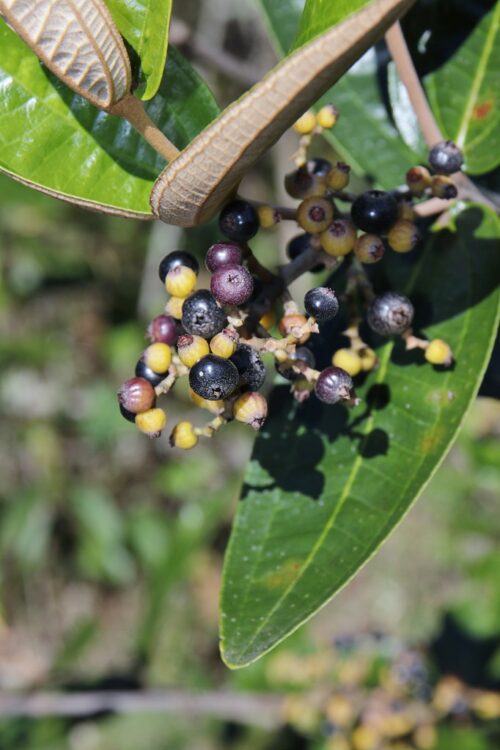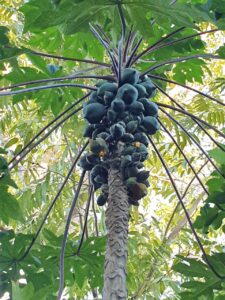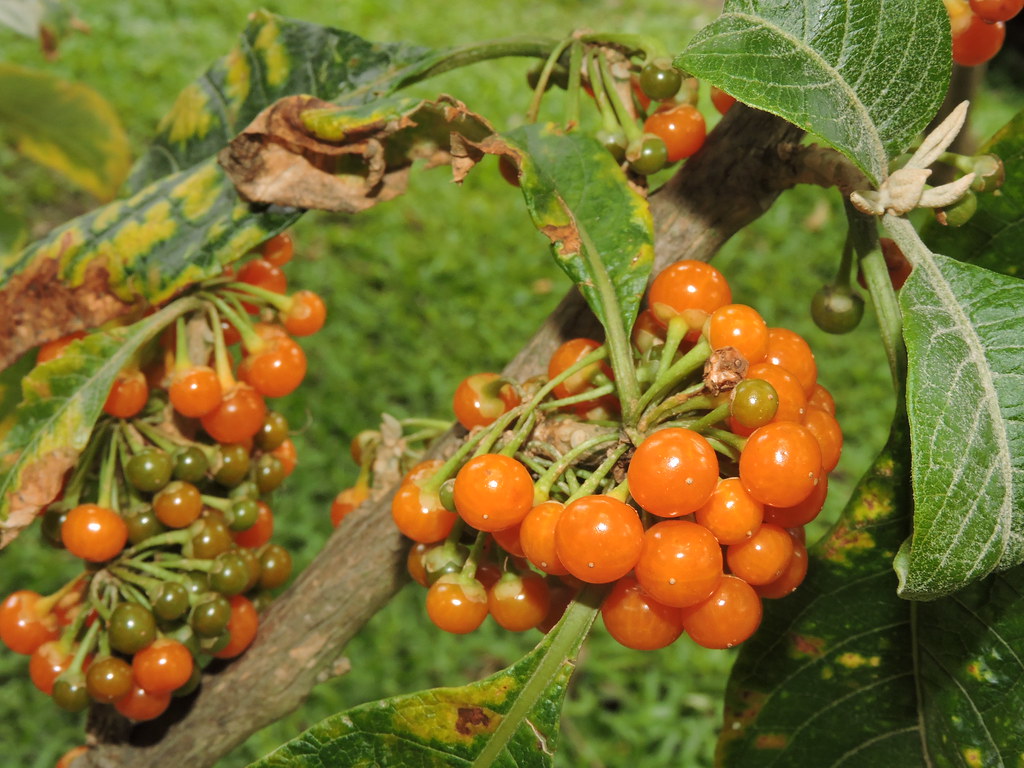5 Commons plants and trees to attract birds in Costa Rica.
For us, bird lovers it is a dream to have tools but natural tools to attract birds, an “easy” way to make the birds come closer. If you have a big enough property to plant trees or smaller plants here is a list that depending on the area might work.

Mountain Immortelle (Erythrina poeppigiana)
Flowering/fruiting: From December through April.
Distribution: Panama to South America. In Costa Rica is planted in coffee and cacao plantations from mid-elevations, most naturalised in the Central Valley.
This tree tends to be pollinated by perching birds such as Oriols, Warblers and Hummingbirds.

Tucuico (Ardisia compssa)
Flowering/fruiting: From January to November.
Distribution: From the South of Mexico to Ecuador and Venezuela, Antilles. In Costa Rica on both slopes from 0 to 3100 above the sea level.
The fruit is highly desired by several species of birds like Clay-colored Thrush (Turdus grayi), Motmot (Momotus momota), Purple dove (Patagioenas flavirostris), Boat-billed Flycatcher (Megarhynchus pitangua), Brown Jay (Cyanocorax morio), Masked Tityra (Tityra semifasciata), Blue-gray Tanager (Thraupis episcopus), Summer Tanager (Piranga rubra), among others.
Papaya (Carica papaya)
Flowering/fruiting: Seasonal
Distribution: Prefers low and medium elevations on both slopes and the Central Valley. It reproduces by seed.
Some species to mention that love this tree are Toucans, Woodpeckers, Tanagers, Euphonias and many others.
Roble Sabana – Pink Trumpet (Tabebuia rosea)
Flowering/fruiting: Blooms from January to March. The fruits comes after flowering.
Distribution: This species is native from Mexico to Colombia and Venezuela. In Costa Rica it is found mainly on the Pacific slope, from Guanacaste, Puntarenas, Puriscal, the Central Valley and the South Zone to the Osa Peninsula; 0-1,200 m elevation.
Some birds visit the flowers in search of nectar, including the Summer Tanager (Icterus galbula) and the hummingbirds Amazilia rutila, Heliomaster constantii and Archilochus colubris.
Guititi (Acnistus arborescens)
Flowering/fruiting: March, April, May and even August.
The fruits are small orange fruits that have a pleasant and sweet flavour that avidly attracts frugivorous birds.
Distribution: It is distributed from southern Mexico to northern South America. In Costa Rica it is found at average elevations of 600-1800 masl on both slopes.
According to local studies it is visited by more than 80 species of resident and migratory birds that include families such as Turdidae, Pipriidae, Tyrannidae, Capitonidae, Ramphastidae, Columbidae, Psittacidae, Thraupidae, Vireonidae, Cardinalidae, among others. It is possible that some mammals consume its fruit. The flowers are visited by hummingbirds such as Chlorostilbon assimilis, Klais guimeti, Amazilia edward and Selasphorus scintilla
Author: Daniel Montiel – Nature Group.



